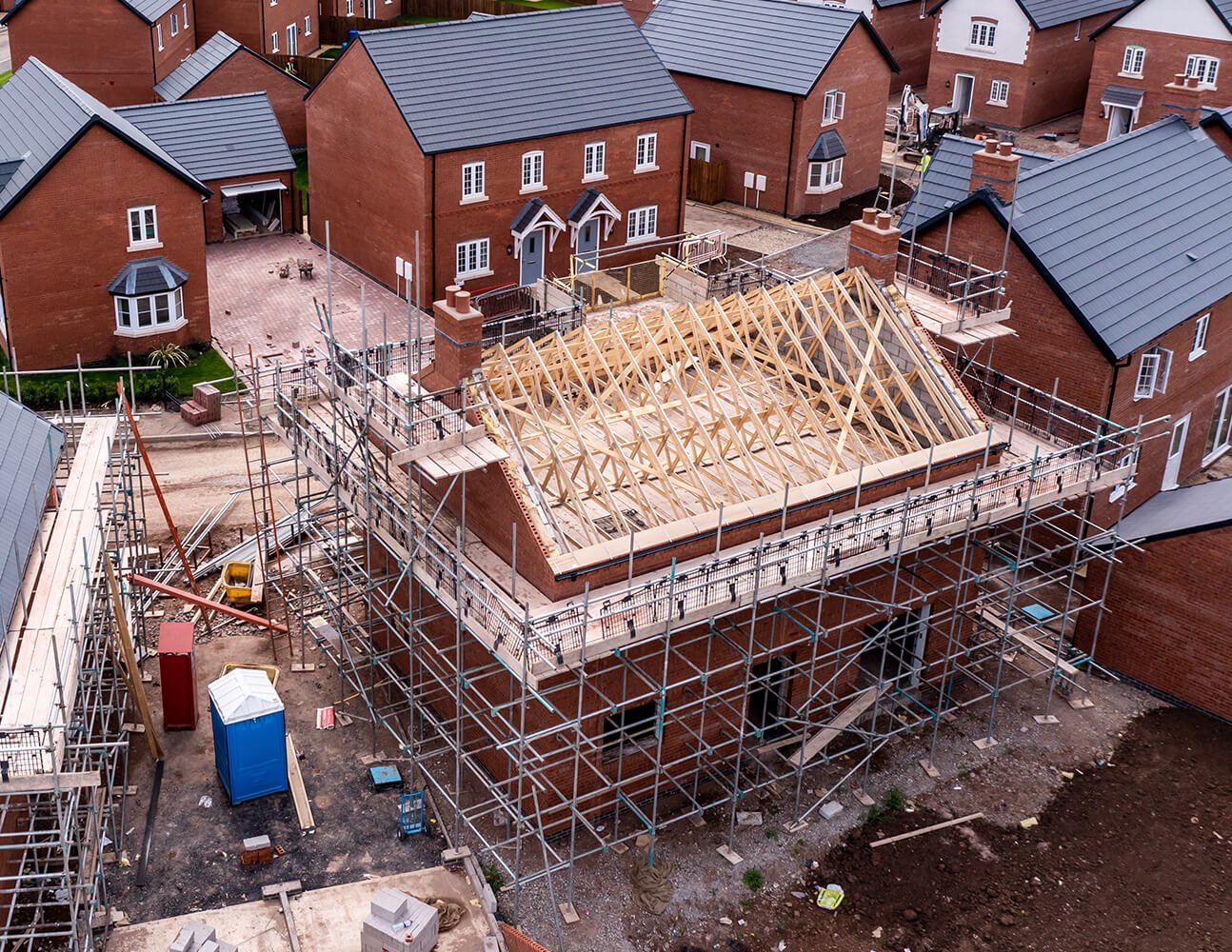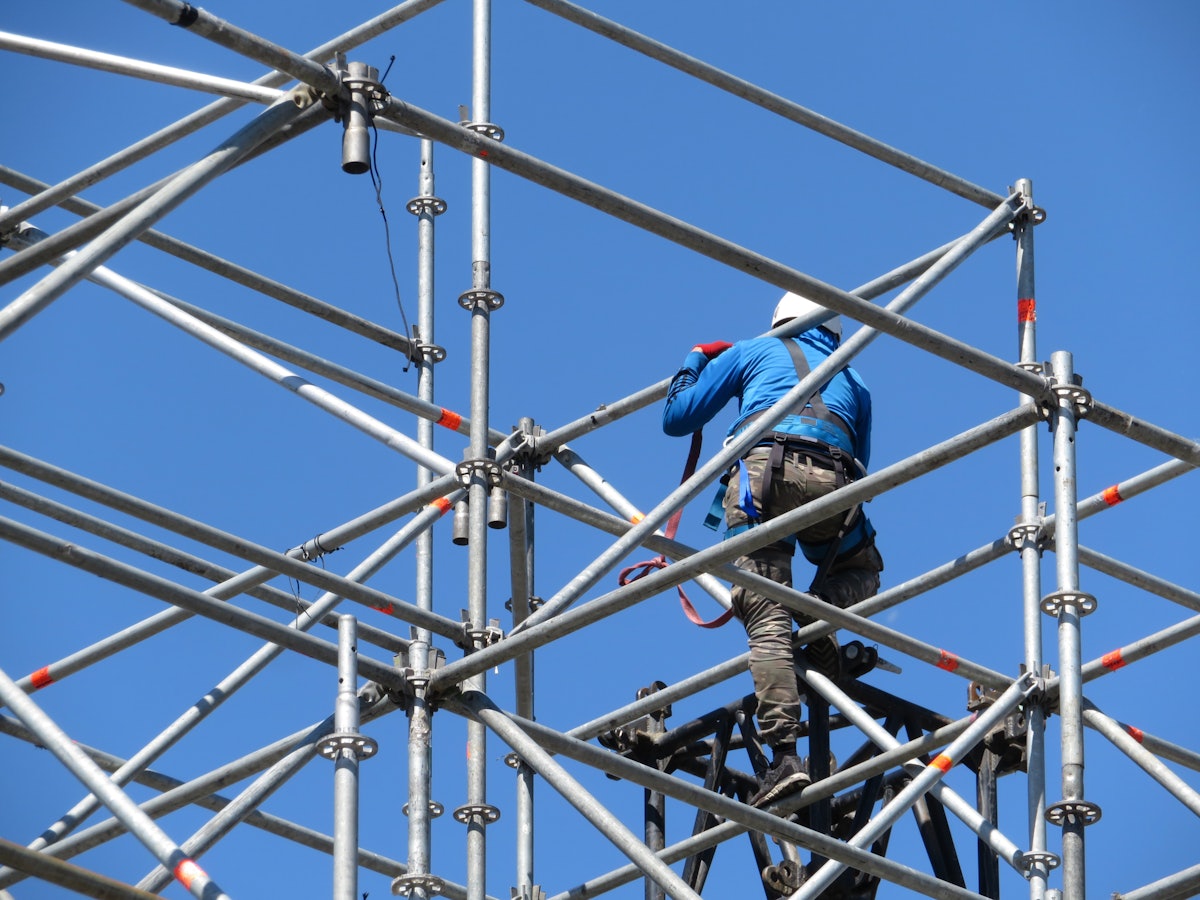Temporary Roof Scaffolding to Ensure Safe Working Conditions During Projects
Temporary Roof Scaffolding to Ensure Safe Working Conditions During Projects
Blog Article
A Comprehensive Guide to the Important Attributes of Scaffolding in Modern Building And Construction
The landscape of contemporary building increasingly depends on effective scaffolding systems that focus on technology, security, and performance. As projects expand in intricacy, recognizing the crucial functions of scaffolding comes to be vital for ensuring worker security and maximizing project timelines. This overview checks out different sorts of scaffolding, highlights key safety attributes, and checks out material advancements that add to performance and sustainability. The effects of these aspects prolong much beyond simple construction practices, triggering a more detailed look at how they affect general project success and worker well-being.
Kinds Of Scaffolding
Although scaffolding systems can differ widely in layout and application, they normally fall into numerous distinctive classifications that satisfy different building and construction requirements - Scaffolding. One of the most usual kinds consist of supported scaffolding, suspended scaffolding, and rolling scaffolding
Supported scaffolding consists of systems sustained by a structure of poles, which offer a elevated and stable functioning surface. This kind is generally used for jobs that need substantial elevation, such as bricklaying or external painting.
Suspended scaffolding, conversely, is used for jobs requiring access to high elevations, such as cleaning or repairing building facades. This system hangs from a rooftop or one more structure, permitting employees to lower or increase the system as required.
Moving scaffolding features wheels that permit simple movement across a work site. It is specifically helpful for jobs that call for constant moving, such as indoor work in large spaces.
Each kind of scaffolding is developed with specific applications in mind, ensuring that construction projects can be executed efficiently and efficiently. Comprehending these classifications is vital for picking the appropriate scaffolding system to satisfy both task demands and website conditions.
Trick Safety And Security Features
Safety is critical in scaffolding systems, as the possible risks connected with operating at elevations can bring about major accidents if not appropriately taken care of. Secret safety features are vital to guarantee the health of workers and the stability of the building and construction website.
Primarily, guardrails are important. These barriers supply a physical guard against falls, dramatically decreasing the threat of severe injuries. In addition, toe boards are usually made use of to stop tools and products from falling off the scaffold, shielding workers below.
One more vital element is using non-slip surfaces on platforms. This function enhances grip, specifically in adverse climate condition, therefore lessening the chance of slips and drops. Access ladders should be securely positioned to facilitate secure entry and departure from the scaffold.
Routine inspections and maintenance of scaffolding systems are also important. These inspections guarantee that all elements remain in good condition and functioning correctly, attending to any kind of wear or damages immediately.
Lastly, correct training for all personnel involved in scaffolding procedures is important to make sure that they comprehend safety protocols and can identify possible hazards. Scaffolding. Jointly, these features produce a safer working atmosphere and dramatically minimize dangers connected with scaffolding
Material Advancements
Advancements in material science have actually dramatically affected the scaffolding industry, boosting both safety and security and efficiency in contemporary construction. The intro of high-strength steel and aluminum alloys has actually transformed typical scaffolding systems.
Furthermore, cutting-edge composite products, such as fiberglass-reinforced plastics, have actually become viable alternatives. These materials are resistant to rust and environmental deterioration, therefore extending the life expectancy of scaffolding systems, particularly in rough weather condition conditions. The usage of such products adds to lower upkeep costs and makes sure regular performance gradually.


Layout Factors To Consider
Considering the complexities of contemporary building tasks, effective scaffolding layout is extremely important to making sure both performance and security. Layout considerations should include different factors, consisting of tons capacity, elevation, and the particular requirements of the building and construction website. Each project offers special challenges, demanding a versatile method to scaffolding systems that can adjust to differing problems.
Structural honesty is vital; as a result, designers should calculate the lots that the scaffolding will sustain, including employees, products, and devices. The choice of products plays an essential duty in making sure the scaffolding can hold up against these lots while staying resilient and light-weight. In addition, the style needs to enable simple access and egress, assisting in the smooth motion of materials advice and personnel.
Safety and security attributes, such as guardrails and non-slip surfaces, should be included to reduce dangers of accidents. In addition, the design must consider the surrounding atmosphere, including nearby structures and possible threats. By addressing these style considerations, building companies can boost the efficiency of scaffolding systems and promote a safer working atmosphere, ultimately contributing to the total success of the job.
Upkeep and Evaluations
The efficiency of scaffolding systems expands past first layout and execution; recurring upkeep and normal examinations are vital to guaranteeing their proceeded efficiency and security throughout the duration of a project. Regular evaluations ought to be conducted by certified employees to recognize any kind of signs of wear, damages, or instability that might compromise the integrity of the scaffolding.
Maintenance procedures must consist of routine checks of architectural components, such as installations, slabs, and frameworks, making sure that all elements remain complimentary and protected from corrosion or various other damage. In addition, the performance of security functions, such as guardrails and toe boards, need to be assessed to make certain conformity with security laws.
Paperwork of all inspections and upkeep activities is critical for accountability and regulative conformity. A methodical strategy to record-keeping not only help in tracking the problem of the scaffolding however additionally offers essential evidence in case of a case.
Eventually, developing a detailed upkeep and examination routine will considerably lower the risk of mishaps and boost the overall security of the building and construction site. By prioritizing these methods, construction managers can secure employees and copyright the job's honesty.

Conclusion
To conclude, the vital attributes of scaffolding in modern-day building and construction include a variety of important aspects, consisting of varied kinds, essential safety mechanisms, material innovations, and thoughtful design considerations. Emphasizing safety via guardrails and non-slip surface areas, along with innovations in products like high-strength steel, improves both efficiency and sustainability. Regular maintenance and examinations are essential for making sure architectural integrity and safety on building Learn More Here and construction websites, scaffolding size inevitably helping with effective project implementation and promoting the health of workers.
The landscape of modern-day building increasingly counts on efficient scaffolding systems that prioritize safety and security, effectiveness, and development.Improvements in material scientific research have considerably influenced the scaffolding industry, boosting both safety and security and efficiency in contemporary construction. Overall, these product innovations not only boost the performance and security of scaffolding systems but additionally align with the industry's press towards sustainability, as many contemporary materials are created to be a lot more environmentally pleasant.
Considering the intricacies of contemporary building tasks, effective scaffolding layout is extremely important to making certain both capability and security.In final thought, the vital features of scaffolding in modern construction incorporate a range of critical components, including diverse kinds, key security systems, product advancements, and thoughtful style factors to consider.
Report this page